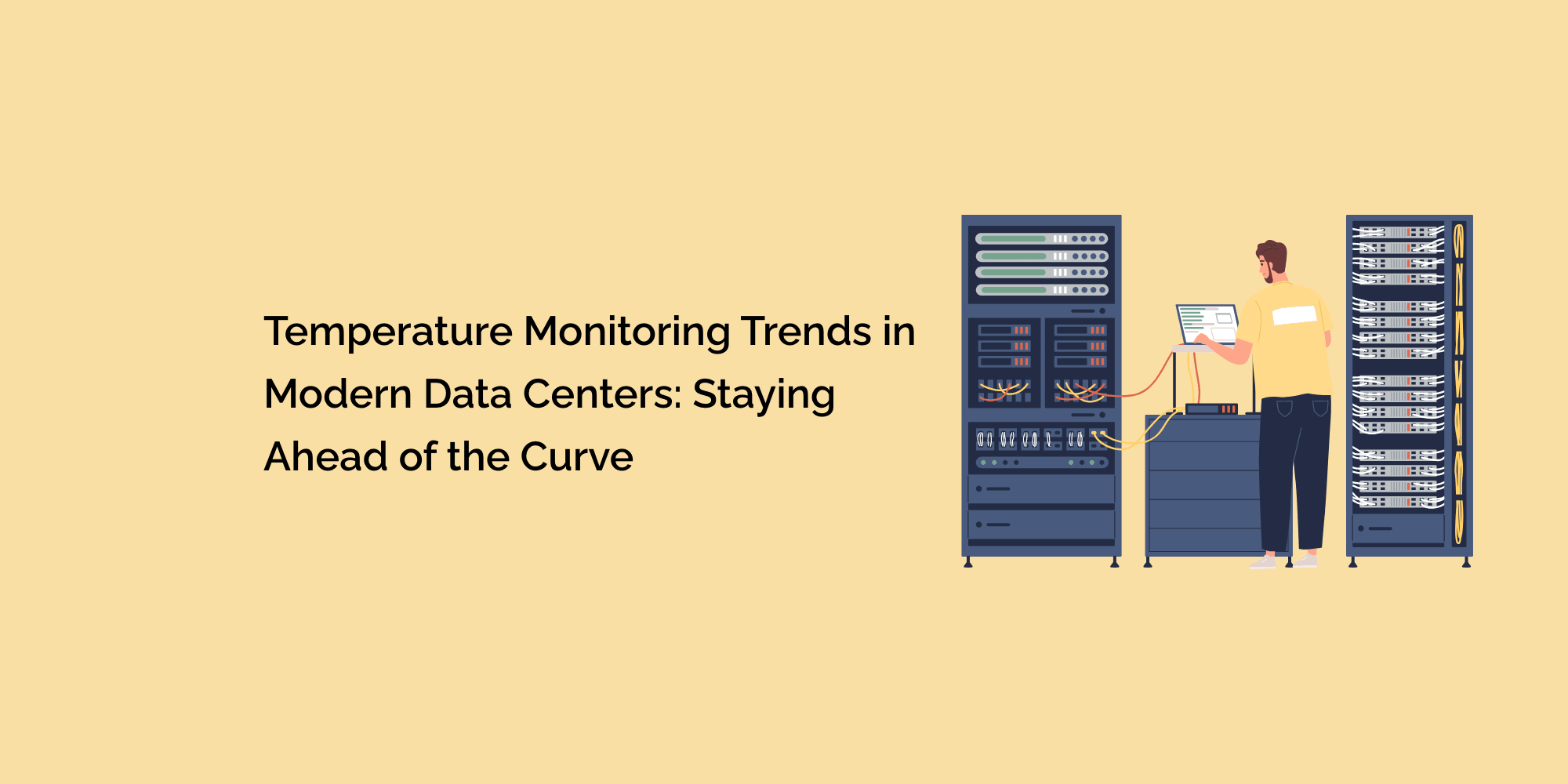Modern data centers are the nerve centers of the digital age, serving as the backbone for various online services and applications. With the exponential growth in data volume and the increasing demand for faster and more reliable data processing, data centers face the critical challenge of maintaining optimal temperature conditions. Efficient temperature monitoring is vital for data center operators to optimize cooling systems, prevent equipment failures, reduce energy consumption, and ensure uninterrupted operations. As technology continues to evolve, temperature monitoring in data centers has witnessed significant advancements, giving rise to new trends and innovations. In this blog, we will explore the latest temperature monitoring trends in modern data centers and the importance of staying ahead of the curve to ensure the efficient and sustainable operation of critical infrastructure.
Internet of Things (IoT) Integration
The integration of Internet of Things (IoT) technology is transforming data center temperature monitoring. IoT-enabled temperature sensors and devices can collect and transmit temperature data to a centralized monitoring platform via the internet. This real-time data exchange allows data center operators to monitor temperature conditions remotely, receive instant alerts, and implement automated responses. IoT integration enhances the agility of data center operations, enabling rapid decision-making and immediate actions to prevent potential issues. With IoT technology, data centers can achieve proactive temperature management, leading to improved cooling efficiency and reduced downtime risks.
Artificial Intelligence (AI) and Machine Learning
Artificial Intelligence (AI) and Machine Learning (ML) algorithms have become instrumental in data center temperature monitoring. AI-powered systems can analyze vast amounts of temperature data, identify patterns, and predict potential cooling challenges or anomalies. Machine Learning algorithms can continuously learn from historical temperature trends and refine their predictions, enabling data center operators to anticipate temperature fluctuations and plan for preventive maintenance. AI-driven temperature monitoring enhances energy management, optimizes cooling strategies, and minimizes the risk of hardware failures, thus ensuring data center efficiency and reliability.
Edge Computing and Temperature Monitoring
The rise of edge computing has reshaped the data center landscape, leading to the emergence of distributed data centers closer to end-users. With edge computing, data centers are located nearer to the sources of data, reducing latency and improving data processing speed. This proximity to end-users also impacts temperature monitoring strategies. Edge data centers often face unique cooling challenges due to varying environmental conditions. As a result, edge data centers require sophisticated temperature monitoring solutions that can adapt to changing conditions and ensure optimal cooling efficiency.
Advanced Remote Monitoring Solutions
Remote monitoring solutions have long been a staple of data center temperature management, allowing operators to access critical temperature data from anywhere at any time. However, modern remote monitoring solutions offer enhanced features, such as real-time data visualization, comprehensive reporting, and intelligent alert systems. These solutions enable data center operators to gain deeper insights into temperature conditions, identify potential issues promptly, and make data-driven decisions. Additionally, advanced remote monitoring solutions often offer integration capabilities with other data center management systems, streamlining overall operations and facilitating seamless data exchange.
Energy Efficiency and Green Initiatives
Sustainability and energy efficiency have become integral components of modern data center operations. Temperature monitoring plays a significant role in supporting green initiatives by optimizing cooling systems and reducing energy consumption. As data centers strive to minimize their carbon footprint, temperature monitoring trends align with energy-efficient cooling strategies, such as liquid cooling and advanced airflow management techniques. Proactive temperature monitoring allows data center operators to identify opportunities for energy savings and implement eco-friendly cooling solutions.
5G and Data Center Cooling
The deployment of 5G networks has ushered in a new era of data-intensive applications and increased data center demands. The higher data transfer rates and increased workload have implications for data center cooling. The trend of temperature monitoring in 5G-enabled data centers focuses on ensuring robust cooling capabilities to handle the additional heat generated by higher data processing requirements. Temperature monitoring solutions in 5G data centers prioritize real-time monitoring, quick response to cooling challenges, and predictive analytics to accommodate the dynamic nature of these environments.
Liquid Cooling Solutions
Liquid cooling has gained traction as an energy-efficient alternative to traditional air cooling in data centers. Liquid cooling solutions offer higher heat dissipation capabilities, reducing the energy required for cooling equipment. Temperature monitoring is an integral part of liquid cooling implementation, ensuring precise temperature control and preventing overheating of liquid-cooled components. Data center operators can leverage temperature monitoring data to optimize liquid cooling system performance, leading to increased energy efficiency and reduced operating costs.
Data Center Infrastructure Management (DCIM) Integration
Data Center Infrastructure Management (DCIM) systems are increasingly integrated with temperature monitoring solutions to provide a comprehensive view of data center operations. The integration of temperature data into the DCIM platform allows for centralized management of cooling resources, power consumption, and overall data center performance. DCIM integration with temperature monitoring enables data center operators to make informed decisions based on real-time temperature conditions and cooling efficiency metrics, streamlining operations and enhancing data center reliability.
Conclusion
Temperature monitoring in modern data centers has evolved significantly to keep pace with the growing demands of the digital era. Trends such as IoT integration, AI-driven analytics, edge computing, advanced remote monitoring, and liquid cooling solutions have transformed how data center operators manage temperature conditions and energy efficiency. Staying ahead of the curve in temperature monitoring is essential for data centers to optimize cooling systems, prevent hardware failures, reduce downtime risks, and align with energy-efficient and sustainable practices.
By embracing these temperature monitoring trends and implementing cutting-edge solutions, data center operators can achieve proactive temperature management, improved cooling efficiency, and enhanced overall data center reliability. As technology continues to advance, data centers must adapt their temperature monitoring strategies to ensure they remain at the forefront of efficient and sustainable data center operations in the digital age.








